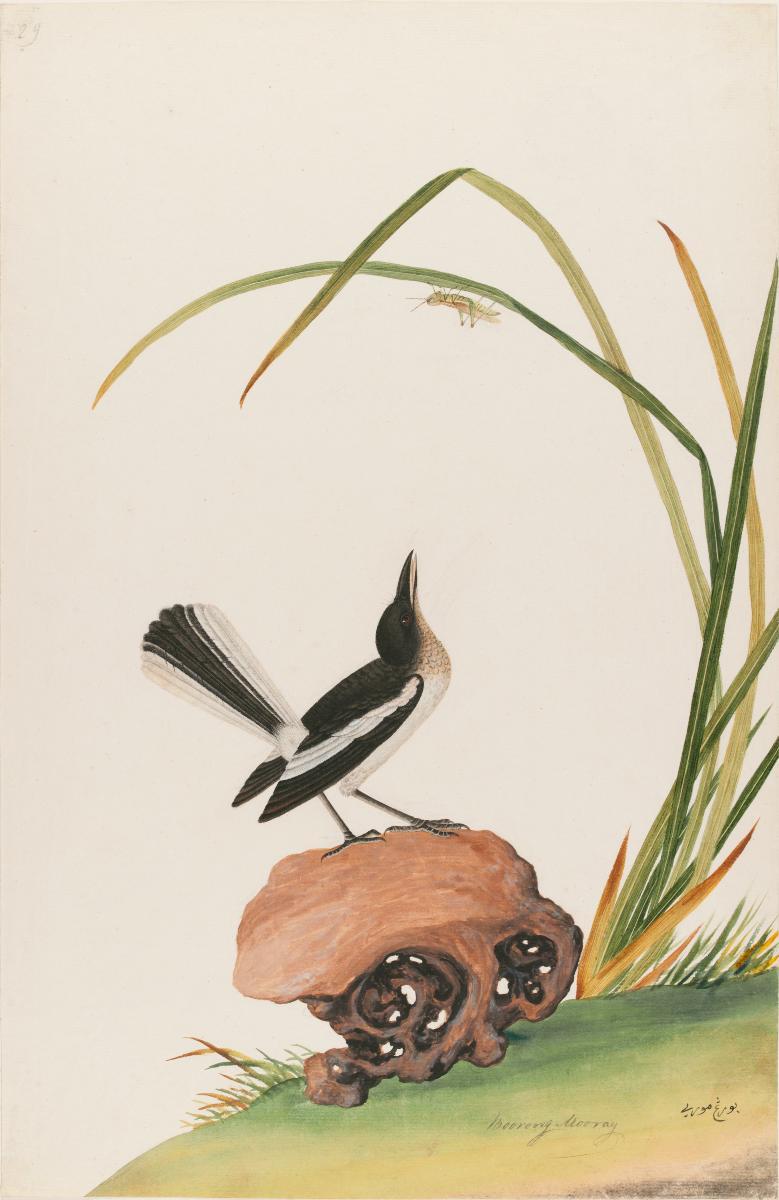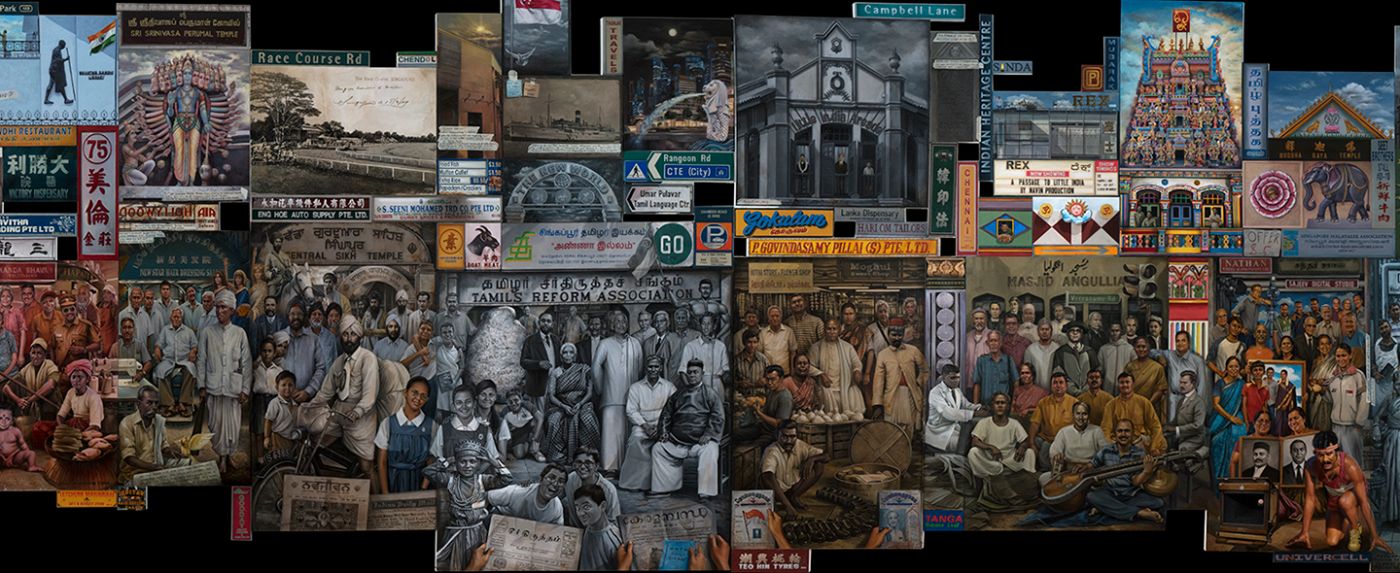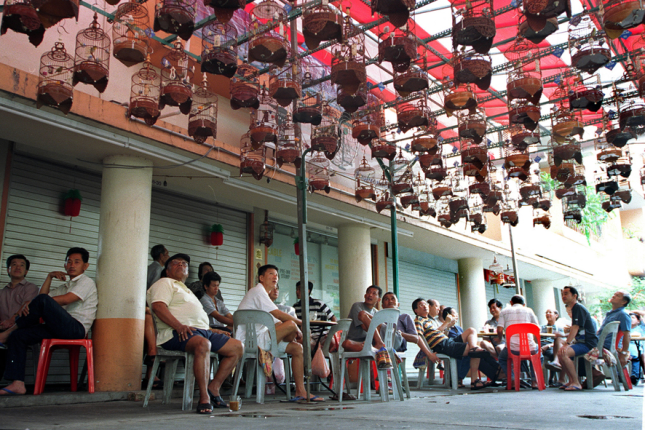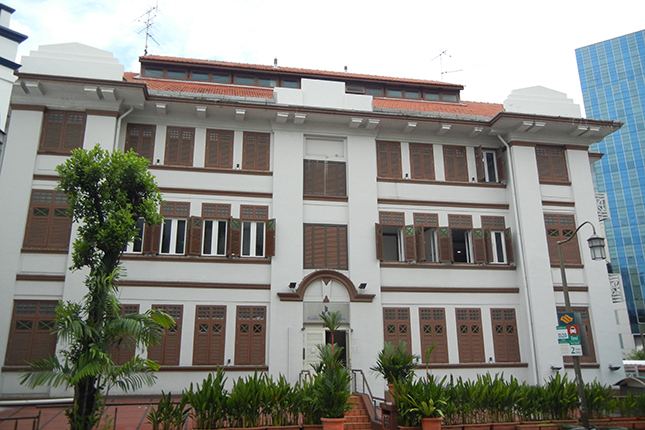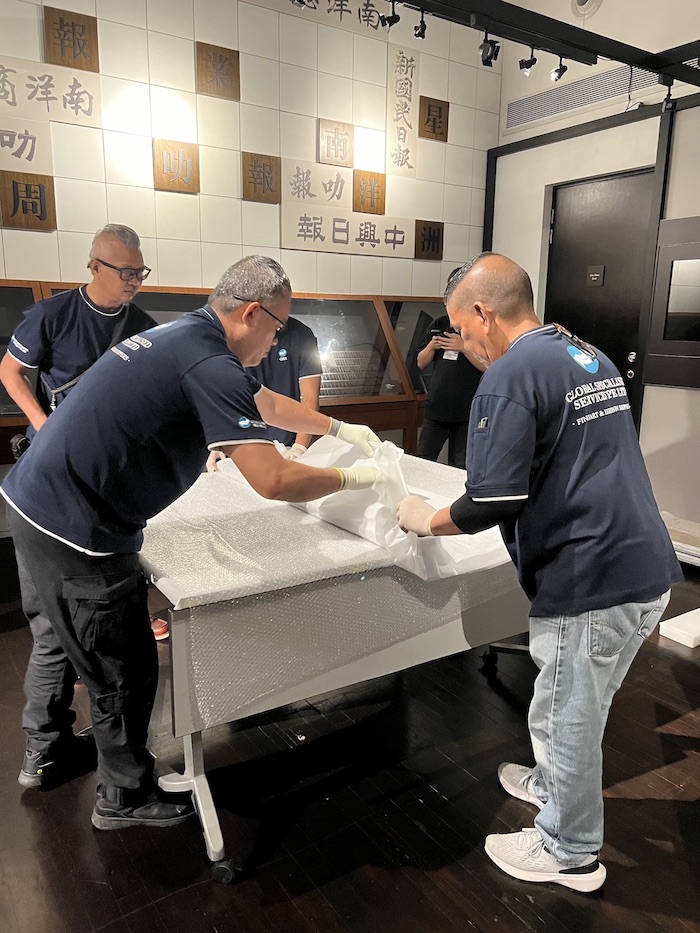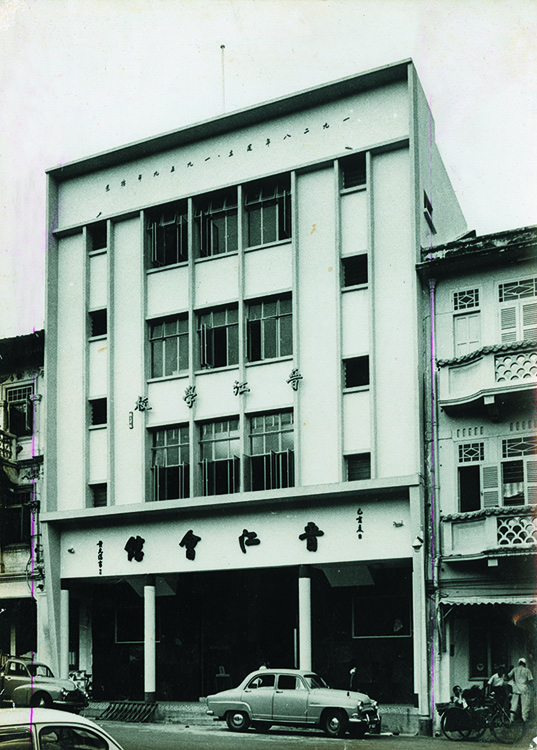Text by Wong Xinyuan, Loh Yi Fong/Nanyang Technological University
A bird chirps in its captivity in a Sembawang homeowner's flat. Years ago,
this area used to be mangroves, ponds, mudflats, and grasslands. An early
dawn’s bird-watch could yield fifty distinct species in the early 1970s.
Might birds in the wilderness that used to exist there, have chirped similarly
- and who remembers their birdsong till today?
 Senoko (Sungei Sembawang) map 1990, p.97, from the Master Plan for the
Conservation of Nature in Singapore, by Malayan Nature Society (Singapore
Branch), ISBN 981-00-2327-8.
Senoko (Sungei Sembawang) map 1990, p.97, from the Master Plan for the
Conservation of Nature in Singapore, by Malayan Nature Society (Singapore
Branch), ISBN 981-00-2327-8.
Birds are a part of our natural heritage. Firstly, it is not only Nature
Society (Singapore) (NSS) Bird Group, the Kebun Bahru Birdsinging Club, or
specialists who know bird species by name. Many older Singaporeans still have
latent knowledge about birds, harkening back to their childhoods in kampongs.
Secondly, Singapore is a biodiversity hotspot where birds play key roles in
the ecosystem, helping to maintain them, while also connecting us to the past.
The Oriental Magpie Robin (Copsychus saularis) is a curious native species,
once so common as to be known as the “Straits Robin” by British
naturalists in the then Malayan Nature Society. The birdwatching community
renamed the bird to Magpie Robin after realising that it was also found
elsewhere beyond the Straits Settlement. ¹ Among common folk, its names
included the Murai-Kampung Biasa, 鹊鸲, and kuruvi. In the process of
exchanging names, communities congregated to admire its magnificent birdsong.
²
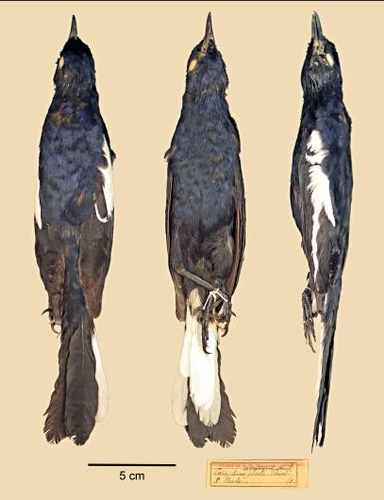 Image of an oriental magpie-robin, originally from Natural History Museum,
Tring, United Kingdom. 1856, Specimen collected by A. R. Wallace in Bali
(Copsychus amoensis),
♂
. Credits to Yuchen Ang. Retrieved from
https://wallace.biodiversity.online/species/A-Vert-Aves-000081
Image of an oriental magpie-robin, originally from Natural History Museum,
Tring, United Kingdom. 1856, Specimen collected by A. R. Wallace in Bali
(Copsychus amoensis),
♂
. Credits to Yuchen Ang. Retrieved from
https://wallace.biodiversity.online/species/A-Vert-Aves-000081
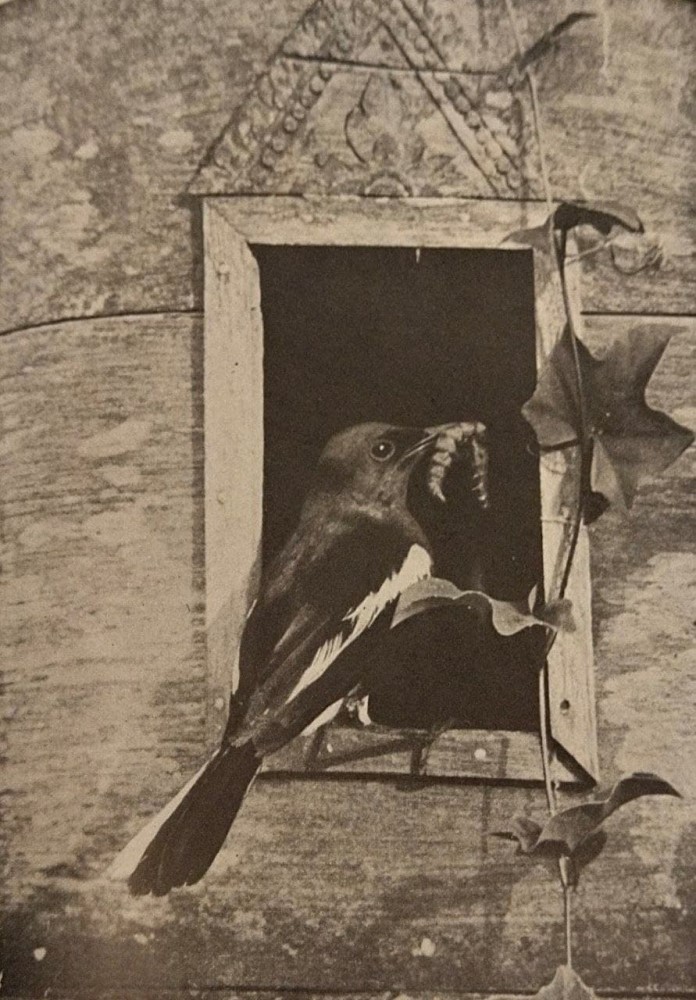 Magpie approaching nest. 1956, photograph also from Guy Madoc, from
‘An introduction to Malayan birds’.
Magpie approaching nest. 1956, photograph also from Guy Madoc, from
‘An introduction to Malayan birds’.
Besides the local’s immersion in nature, birdwatching trips became an
important way to pay more attention to the natural world. As our interviewee,
Tan Gim Cheong from NSS Bird Group, shares, present-day bird enthusiasts
follow a well-trodden path in learning the ways of the birds around us. As the
hobby of going on nature walks spreads to more ordinary people, curiosity and
interest in making kin with the non-human leads them to eventually study
naturalists’ books and know the times of the year when a bird is
nesting, that dawn is the best time to go bird-watching, and eventually all
their names, just like how youngsters get acquainted with the game
“Pokemon”.
 Jarvis, from Birds of Singapore 2018, Birds of Singapore, Retrieved from
https://www.amazon.sg/Birds-Singapore-Christopher-Hails/dp/9814794473
Jarvis, from Birds of Singapore 2018, Birds of Singapore, Retrieved from
https://www.amazon.sg/Birds-Singapore-Christopher-Hails/dp/9814794473
 A Naturalist's Guide to the Birds of Singapore. 2013, Retrieved from
https://singapore.kinokuniya.com/bw/9781912081653
.
A Naturalist's Guide to the Birds of Singapore. 2013, Retrieved from
https://singapore.kinokuniya.com/bw/9781912081653
.
Tan Gim Cheong is a 49-year-old Singaporean man who heads the Bird Group of
NSS. Not only did he discuss how technology and the passage of time have
influenced birding practices, he also shared about the role played by museums,
naturalists, and illustrators in cultivating an appreciation of birdlife. NSS
is one of the oldest and most reputable environmental organisations in
Singapore, having split off in 1991 from its predecessors - the Malayan Nature
Society (1940) and Singapore Natural History Society (1921). While digital
photography tends to be taken for granted today, illustrations and drawings
were an important way of getting to know the birds of Malaya, and remain
important in emphasising characteristic features.
1970s was a time of rapid urbanisation. The Animals and Birds Act was passed
in 1965 to regulate the bird trade. Bird trade was more strictly regulated
with vaccinations and checks on diseases, as well as rigorous import-export
limits. Many imported or traded pet birds that were not native to Singapore,
such as parrots and macaws. This meant increased complexity in how
biodiversity was managed. Imported birds that escape could potentially become
invasive, harming native birds and disrupting local ecosystems.
The magpie robin declined from being common in earlier days, to requiring a
re-introduction programme by NParks in the early 1980s. Gim Cheong comments
that this was initially assessed to be a failure, as the re-introduced birds
may have been poached, however the magpie robin is now a regular at some
sites.³ Today, it remains a threatened species, and in many places has
been replaced by the Javan mynah.⁴ ⁵
 Male Magpie Robin on park ground. 11 August 2019, National Parks.
https://www.facebook.com/nparksbuzz/photos/the-native-oriental-magpie-robin-is-a-nationally-threatened-species-and-was-form/2504266332946161/
Male Magpie Robin on park ground. 11 August 2019, National Parks.
https://www.facebook.com/nparksbuzz/photos/the-native-oriental-magpie-robin-is-a-nationally-threatened-species-and-was-form/2504266332946161/
Today, kampongs are replaced by high-rise buildings that we associate with the
Housing Development Board (HDB), while birdsong appreciation has shifted from
wild birds to caged imported birds. Citizen science programmes aim to build
understanding and love for biodiversity among Singaporeans, as does the
calendar provided by LepakInSg provide a means of joining different
environmental activities. ⁶ The annual Bird Race by NSS Bird Group continues
to gather competing teams to count as many birds as possible at dawn. Many of
these birds remain common in natural heritage areas, like
Pulau Ubin
and Sungei Buloh Nature Reserve.⁷
Will the cry of the magpie robin still be known and loved by children today
who grow up in the urban landscape and not wilderness? Will our streets become
silent?
About Partner
Wong Xinyuan is an undergraduate of Nanyang Technological University
majoring in history. She is interested in transforming the relationship
between nature and humans. She is keen to understand how the effects of
climate change and socioeconomic disparity intersect to form developmental
challenges for Southeast Asian societies.
Loh Yi Fong is an undergraduate of Nanyang Technological University minoring
in history and science, technology & society. He is an incoming graduate
student in the History of Science, Technology and Medicine at the University
of Minnesota-Twin Cities in Fall 2022. He was inspired by his dad’s
love of birds whilst growing up in Changi.
This article was developed for Singapore Heritage Fest 2022












